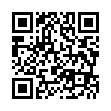german paper sample (PDF)
File information
Author: Yannick Hogarth
This PDF 1.4 document has been generated by Writer / OpenOffice 4.1.1, and has been sent on pdf-archive.com on 01/01/2016 at 20:39, from IP address 108.217.x.x.
The current document download page has been viewed 801 times.
File size: 93.34 KB (1 page).
Privacy: public file

File preview
Sample Note: The following writing sample is an excerpt from a final research paper for a senior level German course
about the history of Germany from the Germanic ages until the first world war. My paper, titled “The Exotic Cartoon:
Advertising and the Portrayal of the Foreign in Imperial Germany” explores the contexts in which racialized African
images were used in consumer goods packaging during a pre- world war 1 Germany. The text presented is in English, but is
also available in German.
Abstract:
The early 20th century Imperial Germany were formative years for the visual advertising
industry. During a time when the advertisements were an entirely new concept, visual-professionals,
who were at the time 'wardens' of this new profession looked to advertisements of Britain and America
for influence, as those countries represented the 'modernity' that was essential to an industrialized super
power. Among many of the concepts that influenced German advertisements were the overtly racialized
caricatures of Africans in product packaging and poster advertisements. While Germans did have active
colonies during this time, the consumer public did not have regular contact with African peoplerendering the widespread use of such imagery as counter-intuitive. Further more, products that had very
little to do with the reputation of the African nevertheless included these depictions, as was the case
with tobacco products. The underlying tropes of these racialized depictions changed however through a
cross-cultural transition between American and German audiences. This phenomenon, under analysis,
gives insights into how early precursors of mass media have shaped perceptions of race, and how
advertising professionals defined and controlled the concept of 'modernity', contrasting the new
expansionist age of colonialism and the establishment of the New World against an 'older' European
entity.
Body Excerpt:
Germany made much progress as an industrialized consumer state. However Britain was years
ahead of Germany in this regard. America had a reputation for being the 'new frontier' of
commercialism. It is a well-known fact that Kaiser Wilhelm II wanted to emulate the British empire in
many areas including colonialism, military expansion and in national identity. The political and
economic identity of Imperial Germany was modeled after the British example in many ways. The
business leaders and advertising strategists of this time followed suit in this imitation, and desired to
emulate the modernity-aesthetic that was present in both America and Britain. As a result, 'modern'
advertising came into existence as an actual industry in Germany during the wilhelmian era.
However, the growing usage of visual advertising strategies did not come without struggle. In
the birth of advertising as an industry came a resistance to what the common German population saw as
an invading 'Americanization'. In the book “Selling Modernity- Advertising in 20th Century Germany”
Professor Kevin Repp talks about Ernst Growald, the director of the poster art publisher Hollerbaum
und Schmidt, and his efforts to convince the German public that the German advertisement would be
different than its American counterpart. The fear was, that the presence of visual print advertisements
would mix the celebration of arts and culture with commercialism, which would inevitably 'corrupt'
German identity. The goal was to show that what the Germans saw as “the 'bold American spirit' -was
not an incurably alien Other, but instead could actually give new life to forms that expressed the
cultural sensibilities of the German soul” (Swett: 36). Advertisements interact with their target
audience both on the levels of visual appeal and through a cultural perspective. Thus, adaptations
would have to be made in order to be culturally compatible with German society. In order to better
integrate advertisements with the German public, visual advertisers and their companies used many
different methods. Typography, use of color, and deliberate phrases were all purposefully planned in
order to truly communicate with the German audience.
Citations in Sample:
Swett, Pamela E., S. Jonathan. Wiesen, and Jonathan R. Zatlin. "Marketing, Modernity, and the "German People's Soul":
Advertising And Its Enemies in Late Imperial Germany, 1896-1914, Kevin Repp."Selling Modernity: Advertising in
Twentieth-century Germany. Durham: Duke UP, 2007. N. pag. Print.
Download german paper sample
german_paper_sample.pdf (PDF, 93.34 KB)
Download PDF
Share this file on social networks
Link to this page
Permanent link
Use the permanent link to the download page to share your document on Facebook, Twitter, LinkedIn, or directly with a contact by e-Mail, Messenger, Whatsapp, Line..
Short link
Use the short link to share your document on Twitter or by text message (SMS)
HTML Code
Copy the following HTML code to share your document on a Website or Blog
QR Code to this page

This file has been shared publicly by a user of PDF Archive.
Document ID: 0000328675.